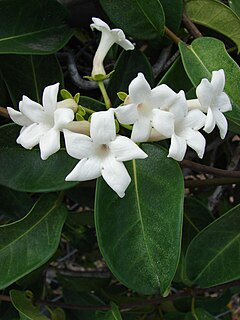
The prostate is both an accessory gland of the male reproductive system and a muscle-driven mechanical switch between urination and ejaculation. It is found only in some mammals. It differs between species anatomically, chemically, and physiologically. Anatomically, the prostate is found below the bladder, with the urethra passing through it. It is described in gross anatomy as consisting of lobes and in microanatomy by zone. It is surrounded by an elastic, fibromuscular capsule and contains glandular tissue as well as connective tissue.
Field corn, also known as cow corn, is a North American term for maize grown for livestock fodder (silage), ethanol, cereal, and processed food products. The principal field corn varieties are dent corn, flint corn, flour corn which includes blue corn, and waxy corn.
Corpus is Latin for "body". It may refer to:

In medicine, proteinopathy, or proteopathy, protein conformational disorder, or protein misfolding disease refers to a class of diseases in which certain proteins become structurally abnormal, and thereby disrupt the function of cells, tissues and organs of the body. Often the proteins fail to fold into their normal configuration; in this misfolded state, the proteins can become toxic in some way or they can lose their normal function. The proteinopathies include such diseases as Creutzfeldt–Jakob disease and other prion diseases, Alzheimer's disease, Parkinson's disease, amyloidosis, multiple system atrophy, and a wide range of other disorders. The term proteopathy was first proposed in 2000 by Lary Walker and Harry LeVine.

Marsdenia is a genus of plants in the family Apocynaceae first described as a genus in 1810. It is named in honor of the plant collector and Secretary of the Admiralty, William Marsden. The plants are native to tropical regions in Asia, Africa, Australia, and the Americas.

Maize, also known as corn, is a cereal grain first domesticated by indigenous peoples in southern Mexico about 10,000 years ago. The leafy stalk of the plant produces pollen inflorescences and separate ovuliferous inflorescences called ears that when fertilized yield kernels or seeds, which are fruits.
Flour corn is a variety of corn with a soft starchy endosperm and a thin pericarp. It is primarily used to make corn flour. This type, frequently found in Aztec and Inca graves, is widely grown in the drier parts of the United States, western South America and South Africa. The large-seeded corns of Peru are used in the preparation of chicha. In South Africa they are known as bread mealies.

Phaeographis is a genus of lichenized fungi in the family Graphidaceae. It has an estimated 180 species.

Lecanographa is a genus of about 40 species of lichens in the family Lecanographaceae. It was circumscribed in 1994 by José M. Egea and Pilar Torrente, with Lecanographa lyncea as the type species.
Capronia is a genus of fungi in the family Herpotrichiellaceae. It has about 80 species.

Yehuda Hiss is a retired Israeli pathologist. He served as the Chief Pathologist at the Abu Kabir Institute of Forensic Medicine between 1988 and possibly as late as 2005. Hiss has also served as part of the faculty for the Terrorism and Medicine Program at the Institute for Counter-Terrorism (ICT) at IDC Herzliya and in the Department of Pathology for the Sackler Faculty of Medicine at Tel Aviv University.
The varieties of Ecuadorian maize are the repository of a rich farming and cooking tradition.

Blekinge archipelago is an archipelago in the Baltic Sea, located in Blekinge in the south of Sweden.
Dialeuca is a genus of gastropods belonging to the family Cepolidae.

Ruehssia is a genus of plants in the family Apocynaceae. It is also in the Asclepiadoideae subfamily and Marsdenieae tribe.
Angiactis is a genus of crustose lichens of uncertain familial placement in the order Arthoniales. It has four species.

Lecanographa dialeuca is a species of saxicolous (rock-dwelling) crustose lichen in the family Roccellaceae. It is found in Cape Verde and Europe.








